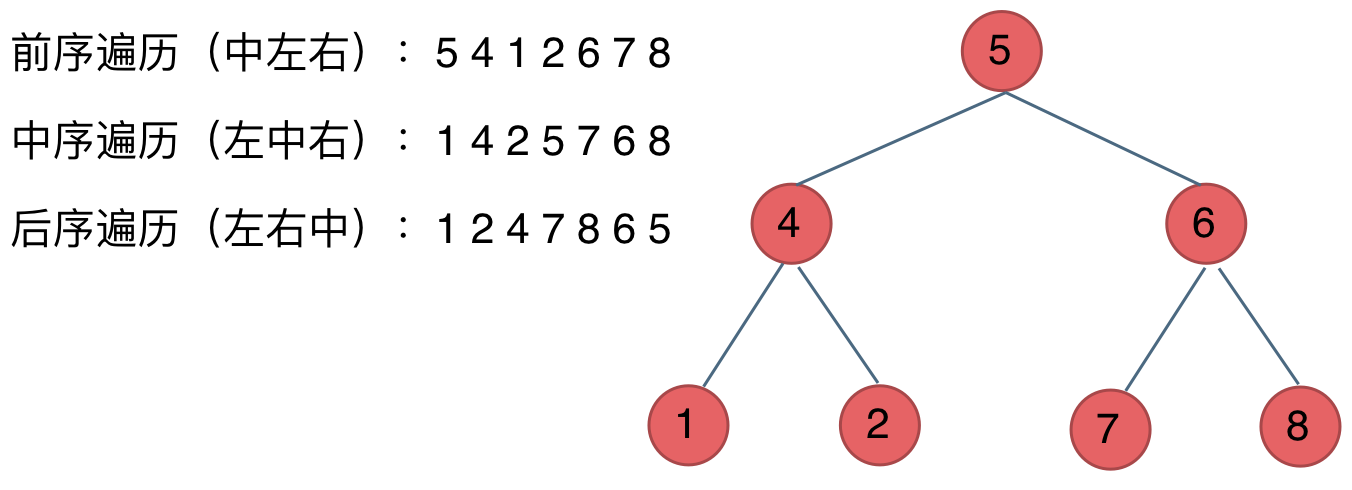当前位置:网站首页>ThreadLocal内存泄漏是伪命题?
ThreadLocal内存泄漏是伪命题?
2022-07-30 08:51:00 【Evan_L】
前言
在研究Mybatis使用多数据源时,发现都是底层的数据源切换逻辑都是基于ThreadLocal。隐约想起,ThreadLocal存在内存泄漏问题。
ThreadLocal
类注释
上Class的注释:
/** * This class provides thread-local variables. These variables differ from * their normal counterparts in that each thread that accesses one (via its * {@code get} or {@code set} method) has its own, independently initialized * copy of the variable. {@code ThreadLocal} instances are typically private * static fields in classes that wish to associate state with a thread (e.g., * a user ID or Transaction ID). * 这个class提供线程本地变量。这些变量不同于其普通变量在于, * 通过get/set方法访问时,每个线程都有自己唯一的独立初始化后的变量副本。 * 典型使用:在类中作为私有静态的ThreadLocal实例, * 期望每个线程都有一个自己的状态(例如:一个用户id或者事务id) * <p>For example, the class below generates unique identifiers local to each * thread. * A thread's id is assigned the first time it invokes {@code ThreadId.get()} * and remains unchanged on subsequent calls. * 例如:下面的class,为每个线程生成了唯一的独一无二的本地变量。 * 线程Id在第一次调用ThreadId.get()方法复制,并且在后续的调用中保持不变。 * <pre> * import java.util.concurrent.atomic.AtomicInteger; * * public class ThreadId { * // Atomic integer containing the next thread ID to be assigned * private static final AtomicInteger nextId = new AtomicInteger(0); * * // Thread local variable containing each thread's ID * private static final ThreadLocal<Integer> threadId = * new ThreadLocal<Integer>() { * @Override protected Integer initialValue() { * return nextId.getAndIncrement(); * } * }; * * // Returns the current thread's unique ID, assigning it if necessary * public static int get() { * return threadId.get(); * } * } * </pre> * <p>Each thread holds an implicit reference to its copy of a thread-local * variable as long as the thread is alive and the {@code ThreadLocal} * instance is accessible; after a thread goes away, all of its copies of * thread-local instances are subject to garbage collection (unless other * references to these copies exist). * 每个线程都持有一个具体的引用,指向它的线程本地副本变量。只要线程存活,ThreadLocal实例都可以访问。 * 线程死亡后,线程所有的线程本地实例副本都将称为垃圾回收的目标。(除非还有其他引用指向这些线程副本) * * @author Josh Bloch and Doug Lea * @since 1.2 */
可以看到,作者并没有提及内存泄漏的可能。只有最后这么一句话:(unless other references to these copies exist)。这也很正常啊,你的目标副本在线程之外还有引用,自然不能被回收。
背景小知识
这个东西简单说一下,就是每个线程保留一份自己的值。Thread.threadLocals成员变量是ThreadLocal#ThreadLocalMap类型。而该Map的Entry.Key使用的是WeakRefrence
。WeakRefrence,简单说,就是每次发生GC都会清理掉其所指向的对象。
PS:这里涉及到的知识点:Java的四大引用类型,
从百度借图:
场景一:
前提:线程存活,但由于发生了GC,key被回收了,但Entry依然存在,对value的引用依然存在。value自然就不能被回收了,value在这里可是强引用。
从这个场景看,如果线程存活时间足够长,key为null的Entry持续增长,确实存在内存泄漏。
场景二:
前提:线程死亡,个人分析:
图中的强引用,将随着线程的死亡而失去强引用,从而被回收。value也会被回收,只要没有其指向它的引用。
但这个结论跟《码出高效》的结论不同,P266说:
如果不进行remove操作,那么这个线程执行完成后,通过ThreadLocal对象持有的String对象是不会被释放的。
为此我做了个实验:
public class Test {
private Logger logger = LoggerFactory.getLogger(this.getClass());
private static ThreadLocal<FBar> TREAD_LOCALS = new ThreadLocal<>();
@Test
public void testThreadLocal() throws InterruptedException {
FBar value = new FBar("1");
new Thread(() -> {
TREAD_LOCALS.set(value);
}).start();
new Thread(() -> {
TREAD_LOCALS.set(new FBar("2"));
}).start();
Thread.sleep(1000);
System.gc();
}
static class FBar {
private final String s;
private int[] re = new int[16];
public FBar(String s) {
this.s = s;
}
@Override
protected void finalize() throws Throwable {
// 这算是Java的析构函数,在垃圾回收前会调用该方法
System.out.println("i be remove!" + s);
}
}
}
输出结果:
i be remove!2
对,只有2被打印了。这印证了类头部的注释。因为这里的1始终在主线程中有引用。
结论:
即使没有显示调用remove方法,当线程死亡时,ThreadLocal的本地变量依然可以被回收。除非本地变量还有其他引用指向它。
回到书中的例子(这里偷懒没贴出来书中的例子,有需要的给我留言,我再码上来。。。),扩展一下String相关的例子。
众所周知,String是比较特殊的,他有常量池,而我们平时直接使用的"xxx",是会直接入池的。而new StringBuilder(“a”).append(“b”).toString();则不然,不会自动入池,除非你显示调用.intern()方法,否则"ab"不会入池,直到你显示调用它。并且,如果你先使用了"ab",再用toString().intern()返回的就是"ab"的对象地址。而入池之后,关于这块的垃圾回收,就不在这里拓展了。
回到问题
ThreadLocal内存泄漏是伪命题?
关于这个问题,对,也不对。
- 不对。因为从上面的分析,当线程长期存活时,确实存在内存泄漏风险。
- 对。只要线程死亡,就会被回收。此外,从使用的角度,ThreadLocal的get/set调用到底层的Entry时,遇到null都会进行清理,即使扩容,也会先清理一波。出现key为null的概率也会降低。
这里多说一下,为什么是概率降低,而不是100%?因为清理工作建立在hash冲突的时候,才会触发清理所有的key为null的entry。(感兴趣的同学可以看下set方法的清理源码和方法注释。)也就是说,只要访问的Entry存在且key不为空,就不会清理。但换个角度一想,既然创建Map时都能申请到table数组空间,晚些清理,好像也不是多大的问题。
java.lang.ThreadLocal.ThreadLocalMap#replaceStaleEntry
码农的日常
我们很多时候,实际上都是在跟线程池打交道。例如:tomcat线程池。换而言之,线程通常会被重复利用,而不会消亡。这就可能使得上述发生内存泄漏成为可能。
除此之外,还有另外一重风险:重复使用了上一次的线程本地变量!(在gc清理掉上次使用的变量之前,而本次又访问了该副本)因为上一次的线程使用把threadLocal设置了,但是该线程再次被使用时,使用了一样的值!
因此,在C+V的日常,当使用到threadlocal时,要多注意一下,显示调用一下remove方法,避免这些问题!
后记
本来想看下多数据源切换的,下次吧。。。晚安。
边栏推荐
猜你喜欢

How to Assemble a Registry

LeetCode二叉树系列——94.二叉树的中序遍历

TreeSet解析

自动化测试selenium(一)

ACL 2022 | 引入角度margin构建对比学习目标,增强文本语义判别能力

编程界的“躲猫猫”比赛 | 每日趣闻

Using IN in MySQL will not go through index analysis and solutions

Unreal Engine Graphic Notes: could not be compiled. Try rebuilding from source manually. Problem solving

剖析SGI STL空间配置器(allocate内存分配函数)

20个电路能懂5个以上,足以证明你在电子行业混过!
随机推荐
虚幻引擎图文笔记:could not be compiled. Try rebuilding from source manually.问题的解决
无法定位程序输入点ucrtbase.abort于动态链接库api-ms-win-crt-runtime-|1-1-0.dll上
XP电源维修fleXPower电源X7-2J2J2P-120018系列详解
The FPGA based protocol 2: the I2C read and write E squared PROM
新手必备!最全电路基础知识讲解
2022 Hangzhou Electric Multi-School 1st Game
延迟队列MQ
BaseQuickAdapter方法getBindingAdapterPosition
[Unity]UI切换环形滚动效果
函数式接口&Lambda表达式——简单应用笔记
用示波器揭示以太网传输机制
Only after such a stage of development can digital retail have a new evolution
PyTorch安装及环境配置(Win10)
经历了这样一个阶段的发展之后,数字零售才能有新的进化
自动化测试selenium(一)
负电压电路(原理分析)
电源完整性基础知识
ACL 2022 | 引入角度margin构建对比学习目标,增强文本语义判别能力
一个低级错误导致的诡异现象——走近科学能拍三集,(C语言)最简单的数组元素读取,不正确!?
MySQL数据库题库